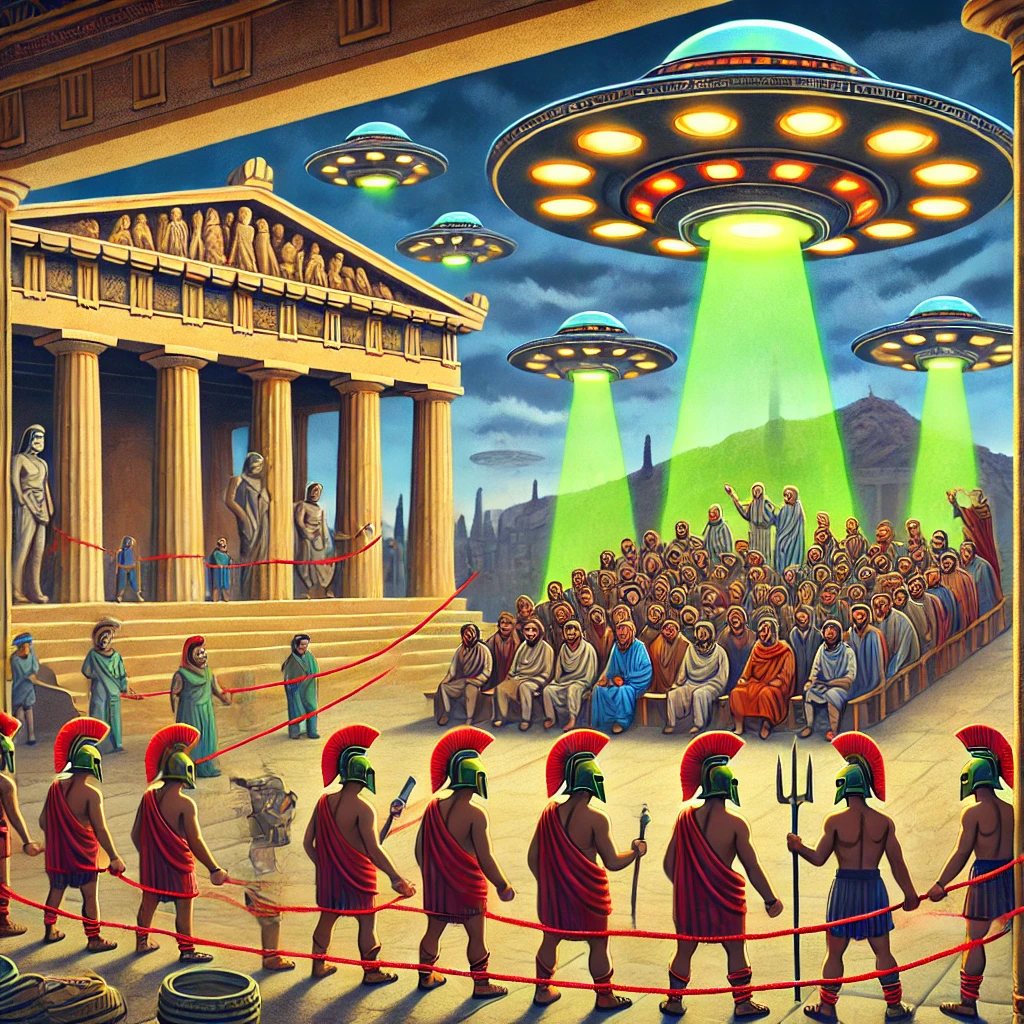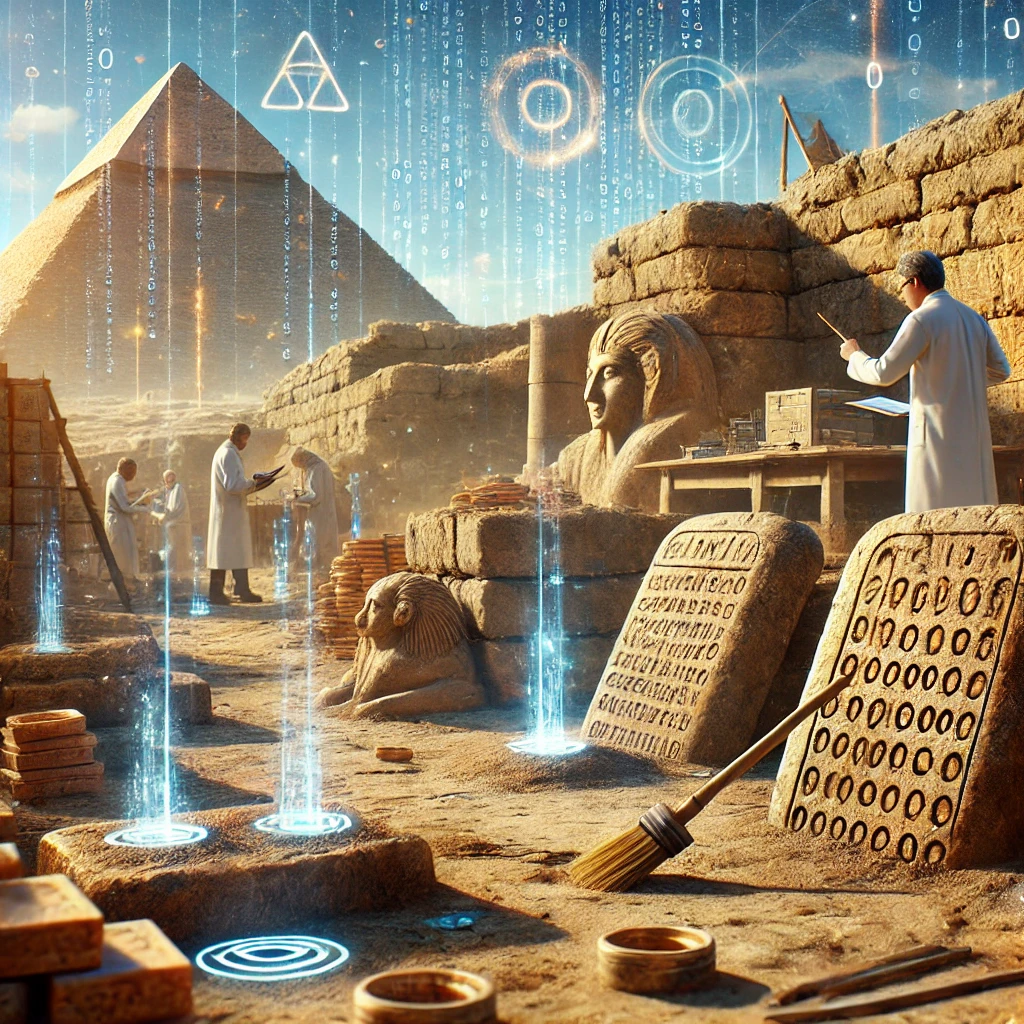Unwilling Voters: Civic Participation in Ancient Athens (and the Alien Conspiracy Theory)
The image of ancient Athens often evokes scenes of passionate citizens eagerly engaging in the birthplace of democracy. However, historical evidence suggests that, much like in modern times, not all Athenians were enthusiastic about participating in the political process. The Athenian government implemented various methods—some coercive—to ensure civic engagement, highlighting a struggle with voter apathy that resonates with contemporary societies. But what if this reluctance wasn’t entirely natural? Some theorists speculate that alien interference may have played a role in shaping Athens’ democratic evolution.
The Red Rope: Herding Citizens to the Assembly (or Alien Crowd Control?)
One of the most striking methods employed was the use of a red-stained rope wielded by Scythian slaves, who served as a kind of ancient police force. On assembly days, these rope-bearing enforcers would sweep through the agora (marketplace), herding citizens toward the Pnyx hill where the Assembly met. Those who avoided participation risked being marked with the red dye—a public sign of shirking civic duty—and could face fines or other penalties.
However, ancient astronaut theorists propose an alternative explanation: the red rope might have been a rudimentary alien technology, used to “herd” citizens into participating in governance. Was it a mere rope, or could it have emitted subliminal signals to ensure compliance? Could the Scythian enforcers themselves have been extraterrestrial operatives?
Lottery Over Elections: Random Selection or Alien Algorithm?
In an effort to promote equality and prevent corruption, many public offices in Athens were filled by lot rather than by election. This system, known as sortition, meant that any eligible citizen could find themselves appointed to a governmental position, regardless of their desire or qualifications. While this method aimed to democratize governance, it also placed individuals in roles they might not have sought voluntarily.
Some argue that sortition wasn’t purely an Athenian invention. What if the random selection process was guided by extraterrestrial algorithms, ensuring that individuals with specific traits or potential were placed in positions of influence? Could Athens have been an experimental hub for interstellar governance?
Challenges with Low Turnout (and Alien “Interference”)
Despite these measures, achieving a quorum for the Assembly was an ongoing challenge. Incentives such as payment for attendance were introduced to encourage participation, yet apathy persisted. Ancient records hint at mysterious sightings in the skies over Athens during critical political events. Could extraterrestrial distractions have been deliberately orchestrated to test the limits of human civic engagement?
Modern Parallels
The Athenian experience mirrors contemporary issues with voter turnout and political engagement. Just as ancient officials resorted to the red rope, modern governments and organizations implement get-out-the-vote campaigns, reminders, and incentives to boost participation. If aliens were involved in Athens, are they still influencing modern democracies? The persistent challenge suggests that civic engagement, whether shaped by humans or extraterrestrial forces, is not inherently automatic.
Disclaimer
This article is intended for informational and satirical purposes, blending historical analysis with speculative fiction. While the existence of alien involvement in ancient Athens is not supported by mainstream archaeology or history, it serves as a humorous lens through which to examine democratic struggles. Readers are encouraged to consult academic sources for a more comprehensive understanding of ancient Athens.






